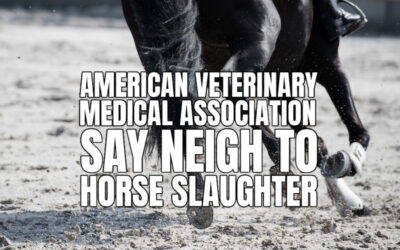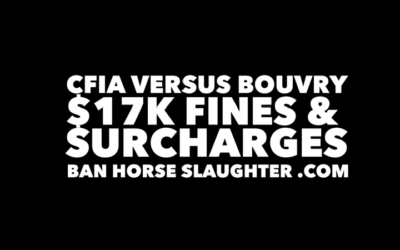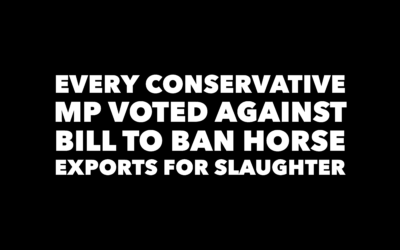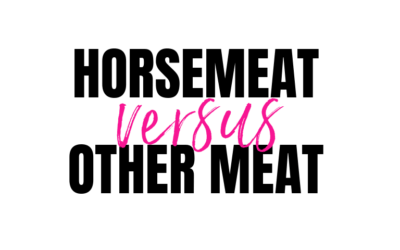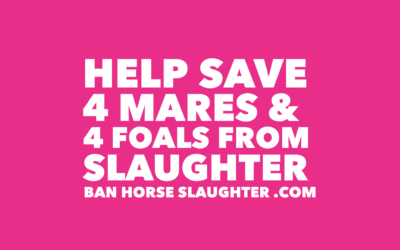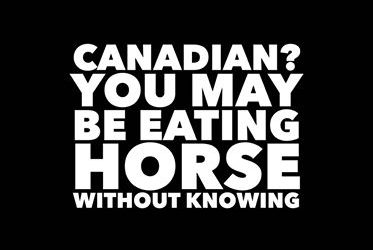IS BILL C-355 DEAD & WHAT'S NEXT?When Bill C-355 reached the Senate, Senator Pierre Dalphond stepped up as a powerful ally in the fight to end the live export of horses for slaughter. His support gave hope to thousands of Canadians who want to see this cruel...

Bracken Fern poisoning in horses
What is Bracken Poisoning?
The Bracken fern has wide and triangular leaves and is a popular perennial fern.
The spores are born in the very late summer months and live on under the wide leaves, with the leaves folding under to protect them.
This plant rises up to three to four feet in height, and this type of fern is found all over the world, especially in very temperate areas.
It also grows in wide, dry, and openly wooded areas.
Due to the vertical growth of the roots, this plant spreads rapidly.
The taste of Bracken is not one that horses seek out, so horses tend to avoid purposely eating the fern.
However, they may resort to eating the leaves if there are no other plants around to graze upon.
It can also be found along roadsides and fences, and horses may choose to ingest it when there is nothing else to forage on.
Hay that is given to horses may also contain parts of the toxic fern.
Bracken fern is toxic throughout the plant; it contains rhizomes, which are toxic roots that spread and shoot out to form new growth underground.
Bracken fern also contains thiaminase, an enzyme that causes vitamin B to become inactive.
Over time, the horse develops a deficiency in thiamine, an essential vitamin B.
Bracken poisoning in horses is caused by horses ingesting all or part of the Bracken fern, usually within the hay they are fed or when they happen to forage upon it.
Symptoms of Bracken Poisoning in Horses Bracken fern toxicity has specific signs which are hard to ignore.
If you see any of the following symptoms in your horse, make an appointment with your veterinarian as soon as possible.
Symptoms include:
Unsteady gait
Flanks have a tucked up appearance
Congestion
Constipation
Agitation
Nervousness
Standing with legs spread apart
Falling
Decreased appetite over time
Muscle tremors
Abdominal pain
Dilated pupils
Heart rhythm abnormalities
Types
Bracken fern comes in a variety of names which are important to be knowledgeable of.
Additional names in which bracken fern may be called are:
Brake
Pasture bracken
Evil fern
Brake fern
Umbewe
Hog pasture bracken
Umhlashoshana
Read more at:


T-SHIRTS IN SUPPORT OF HORSE RESCUE FUND
LIMITED TIME OFFER FREE SHIPPING CANADA & USA
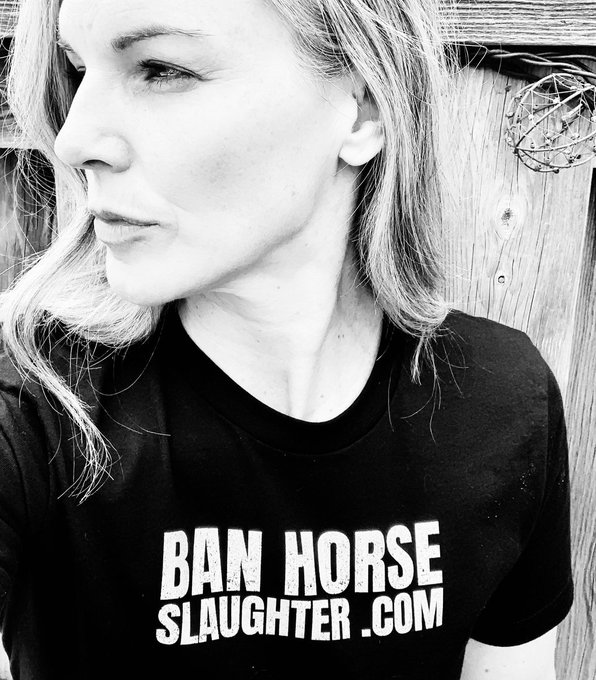
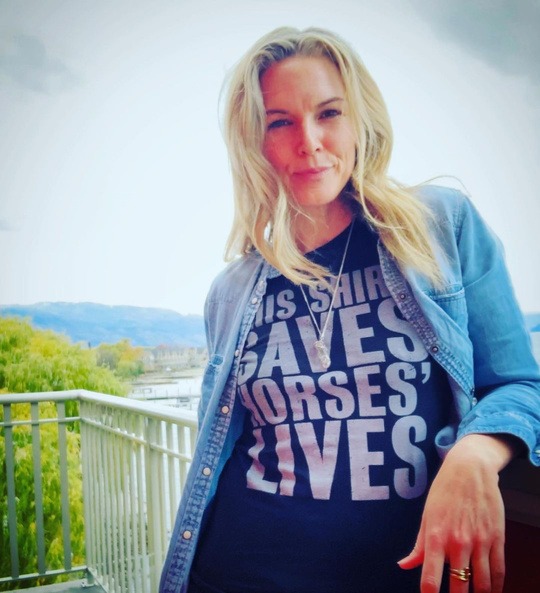
THANK YOU SENATOR DALPHOND
SHOW HORSES SHIPPED TO JAPAN FOR SLAUGHTER
First published August 31, 2022 - UPDATED December 14, 2024. Have you ever wondered who is behind exporting horses from Canada to Japan for the purpose of slaughter for human consumption?According to an article from Ontario Farmer magazine titled: HORSES STILL HEAD TO...
PUBLIC HEALTH RISKS OF HORSEMEAT
AMERICAN VETERINARY MEDICAL ASSOCIATION Quotes are taken from a review published January 26, 2023, titled A review of horses sent to slaughter for human consumption: impact of horsemeat consumption, residual banned drugs, and public health risks...the exportation of...
BOUVRY FINED
JANUARY 6, 2025 BOUVRY FINED A "guilty plea of sorts" today for Bouvry. Instead of going through with scheduled court dates, Bouvry will pay... $17,000.00 in fines and surcharges. Plus a small fortune they would’ve likely dished out for Calgary counsel. January 6,...
CONSERVATIVES IN FAVOUR OF HORSE SLAUGHTER
SOCIAL MEDIA WRONGLY BLAMING PM TRUDEAU Recently on social media, we’ve noticed some advocates blaming Prime Minister Trudeau for the ongoing export of horses from Canada to Japan and other markets for the purpose of slaughter. We are thankful that Prime Minister...
HORSE MEAT VERSUS BEEF
WHAT'S THE DIFFERENCE BETWEEN EATING HORSE MEAT VERSUS CHICKEN, PORK, LAMB OR BEEF?That is a fair question and one that those of us dedicated to ending the slaughter of horses in Canada and beyond, for human consumption, are frequently asked. Let's start by saying...
URGENT: HELP SAVE 8 HORSES FROM SLAUGHTER
JAN. 18/25 UPDATE: THANKS TO YOUR HELP 16 HORSES ARE SAFE (2 NOW IN PERMANENT HOMES) BUT WITH YOUR HELP WE HAVE ROOM TO SAVE 4 MORE. BOUVRY IS SLAUGHTERING HORSESFirst, let's start with the fact that the Bouvry slaughter plant in Alberta is STILL slaughtering horses....
VIDEO: LEAH TAYLOR ROY
STANDING COMMITTEE ON AGRICULTURE AND AGRI-FOODLiberal MP Leah Taylor Roy is a driving force behind Bill C-355. We love how she made use of the short time given her to set the record straight as to how pet, show, sport and race horses are shipped by air versus the...
YOU MAY BE EATING HORSE MEAT WITHOUT KNOWING
This blog post is worthy of a re-post. You may also be interested in Happy Canada (Slaughters Horses) Day as well.Why aren't Canadian food inspectors surprised there's horse meat in YOUR sausages? Beware, summer BBQ-ers: there could be horse meat in your pork...
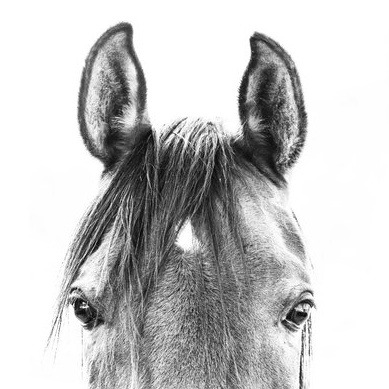
JOIN THE CAUSE. SUBSCRIBE TO OUR MAILING LIST.
You have Successfully Subscribed!
DEMAND AG MINISTER IMPLEMENT A REGULATORY AMENDMENT...
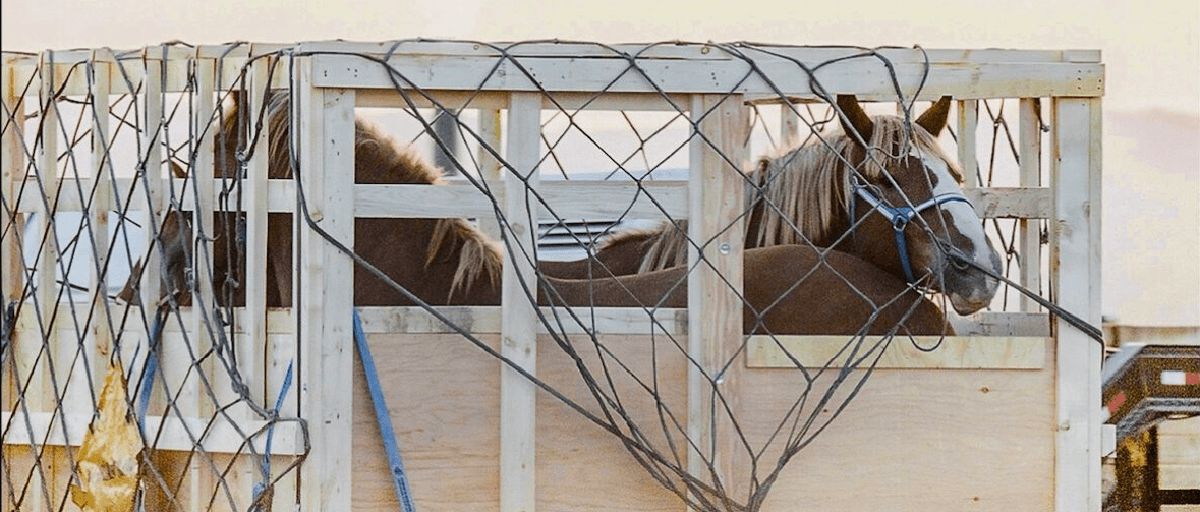
The Honourable Lawrence MacAulay, the current Minister of Agriculture and Agri-Food, has the power to end the inhumane export of horses by air for slaughter by enacting a regulatory amendment.
Help spread the word by sharing this email campaign with friends and family! You can also support the cause by donating—your contribution will help fund advertising efforts to raise awareness and push for change. Every action makes a difference!



